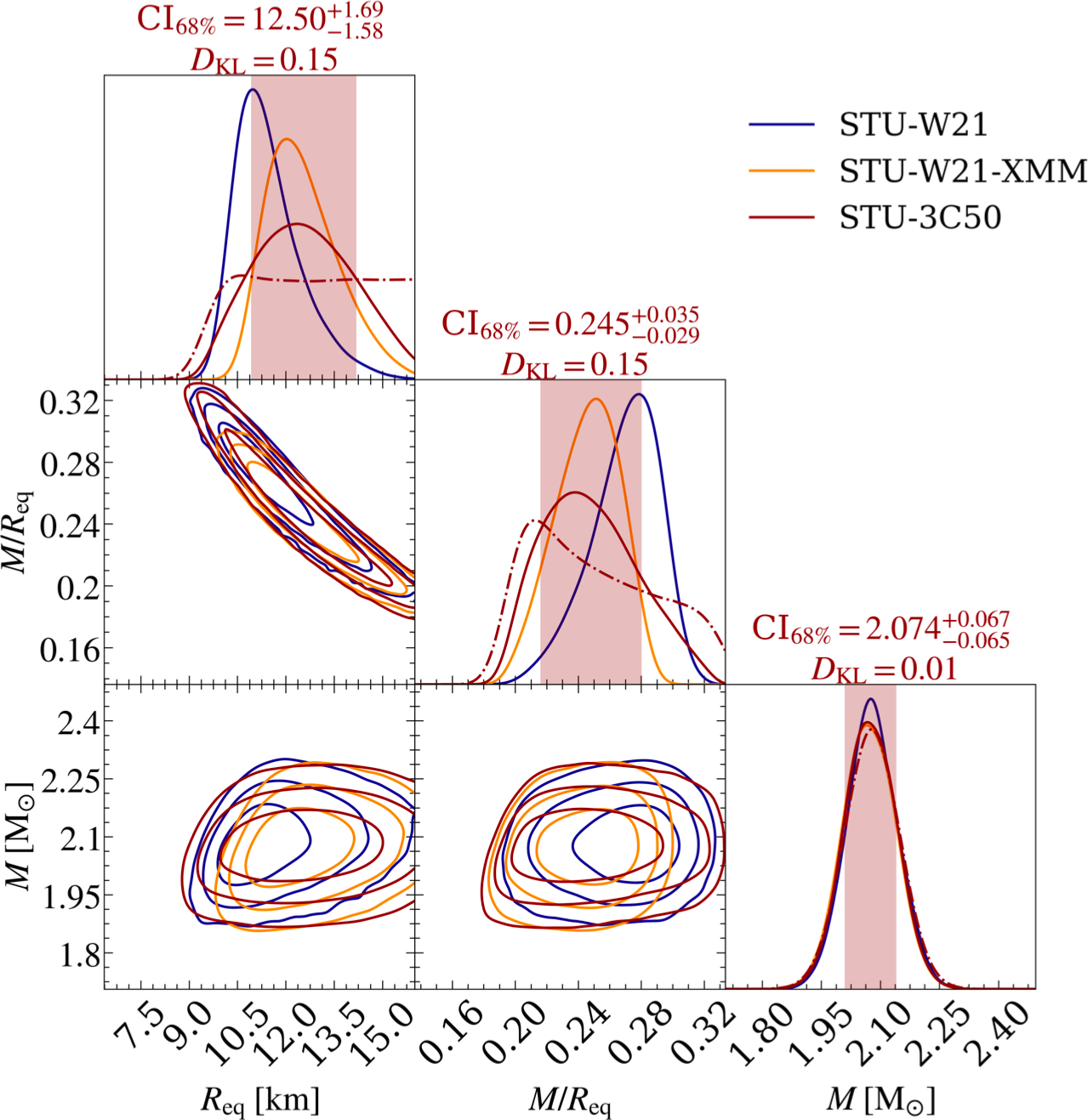NICER / ISS Science Nugget
for December 29, 2022
Revisiting neutron star radii with new tools
NICER's key-science results, constraining the sizes and masses of neutron stars, have generated tremendous interest in the astrophysics, nuclear physics, and gravitational physics communities. As our understanding of NICER's instrument calibration and background "noise" (its susceptibility to environmental and celestial radiation) improves, the NICER Team applies this knowledge to new neutron star datasets while also revisiting past analyses to gauge any impact to previously published results. A new peer-reviewed paper led by T. Salmi (Univ. of Amsterdam), published in The Astrophysical Journal, explores the implications of two background models on NICER's prior radius measurement for the millisecond-period pulsar J0740+6620, among the most massive neutron stars known. Published in a pair of 2021 papers, the prior measurement was made using two independent analysis codes, one from the University of Amsterdam (Riley et al. 2021) and the other jointly from the University of Maryland and the University of Illinois (Miller et al. 2021).
Previously, NICER's mass and radius constraints relied on data from ESA's X-ray Multi-Mirror (XMM) Newton telescope to infer the level of unpulsed emission from the neutron star. As demonstrated in the new Salmi et al. paper, reliable estimates of unpulsed emission are a natural by-product of the NICER pulsar analysis, but any independent constraints can significantly influence the quality of the final mass and radius measurements. Thus, to supplement and improve upon the prior XMM-Newton information, the NICER team has worked to generate internally consistent NICER-only estimates of background to inform mass-radius analyses with independent assessments of unpulsed emission. Two NICER background models, now in wide circulation among NICER users, were tested by Salmi et al.: one is based solely on space-weather information and the geomagnetic location of the ISS at the time of the observations, and the other - known as "3C50" - uses properties inherent to the NICER-collected X-ray data as proxy information to estimate background. (A third background model, called "SCORPEON," was released to the community in recent weeks and is currently in widespread testing.) Happily, the new results - see figures below - show good consistency with the 2021 results, minimizing NICER's reliance on XMM-Newton data to continue probing the extreme physics of neutron stars.


Figure:
Left: A "corner plot" of best-fit probability distributions for model parameters representing the mass (M), equatorial radius (Req), and their ratio (M/Req) for PSR J0740+6620, as derived from NICER data published by Wolff et al. (W21). The blue and orange curves and contours show the results previously published by Riley et al. (2021), who used data from the XMM-Newton observatory to estimate the level of unpulsed emission from the neutron star present in the NICER data. The red curves and contours represent the result of a new NICER-only analysis, informed by the "3C50" NICER background model; the parameter values are consistent with, if somewhat less constraining than, the 2021 results. Contours, from innermost to outermost, represent 68.3%, 95.4%, and 99.7% probability. Figure credit: Salmi et al. 2022.
Right: Best-fit probability distributions for just the equatorial radius of PSR J0740, representing (in blue) the NICER-only and NICER+XMM analyses previously published by Miller et al. (2021), together with new results incorporating the data-filtering prescriptions of the 3C50 model (green dashed curves) and its estimate of the NICER background (orange dashed curve). Figure credit: Salmi et al. 2022.
<< Previous
Main Index
NICER
Science Nuggets
Listed by year:
Listed by topic:
|